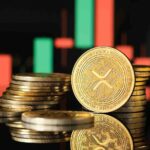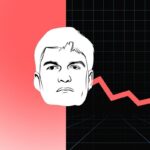For about a year, the stock market and the discourse surrounding it have been in an apparent state of paradox. On the one hand, there has been much talk of a looming recession, particularly as interest rates – which usually decelerate economic activity – have remained high for far longer than expected.
On the other, various stocks and cryptocurrencies have been recording incredible growth with numerous assets reaching new all-time highs (ATHs) after new all-time highs. The trend has been particularly strong with regard to the technology sector and the ongoing artificial intelligence (AI) boom.
This seemingly paradoxical situation of simultaneous extreme fear and extreme greed has led to increasing talk of AI constituting a major bubble, with a significant part of the discussion shifting to whether and why the bubble might burst.
As one of the most prominent technology bulls on Wall Street, Dan Ives, went on CNBC on July 1 to explain that big tech currently is more akin to the Dot-com boom of 1995 than to the subsequent bust, another prominent strategist, Paul Dietrich of B. Riley Financial took the opposite stance.
Why Dietrich believes a crash is coming
At the midpoint of 2024, the U.S. stock market is rife with warning signs of a crash to come, Dietrich cautioned.
For example, the price-to-earnings ratio (P/E) of the benchmark S&P 500 index is at multi-decade highs – once the figures from previous recessions are excluded – and the dividend yield is at historic lows.
The expert also commented that investors are overly enthusiastic about relatively few stocks – a concentration noted in earlier reports of the parallels between the 2024 and the 1929 markets – while also imprudently optimistic about the prospects of the FED actually cutting interest rates in the near future.
Why the crash will be worse than both 2008 and the Dot-com bust
Dietrich believes that the boom part of the cycle has been allowed to persist for much longer than would be usual due to the combination of factors, including the decade-long period of extremely low interest rates and rampant spending, borrowing, and money-printing undertaken by the U.S. government.
It is worth pointing out that the ballooning debt – which became $7 trillion larger than the gross domestic product (GDP) of the U.S. by the end of 2023 – has been a point of contention for years and that the International Monetary Fund (IMF) deems the current national financial policy to be unsustainable at best.
Dietrich believes that the end result of the outlined factors will be a crash of a severity not seen since the Great Depression. The expert’s price target for the S&P 500 in case of the recession stands at a mere 2,800 points – a 48% collapse from the press time levels near 5,475 that would send the index to lows not seen since the COVID-19 era.
Buy stocks now with eToro – trusted and advanced investment platform
Disclaimer: The content on this site should not be considered investment advice. Investing is speculative. When investing, your capital is at risk.








